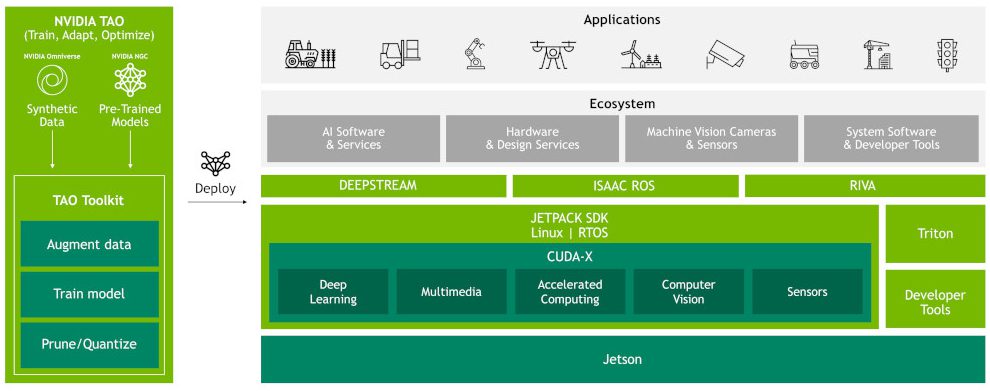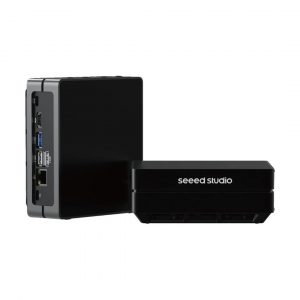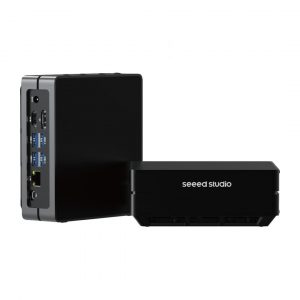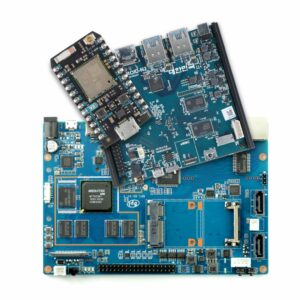Table of Contents:
Some say, that best things come in a small packages, and the better it is if it has huge possibilities. Fortunately, there are more and more such small devices on the electronics market, which make us smile and sometimes even feel deep admiration. Recently we welcomed a new series of compact computers from Seeedstudio. So let’s see what we can expect from them.
What we like minicomputers for
Single board computers are a constantly growing branch of electronics. Every now and then, new generations of devices that we are all familiar with come to light, such as Raspberry Pi minicomputers (which have already survived four generations and we are impatiently waiting for the next one), new Arduino boards and all designs resembling these inventions, which we value for their small size and considerable capabilities.
They usually have a number of different connectors for data, sound and image transfer – with integrated additional chips and interfaces such as Ethernet, USB, HDMI or Wi-Fi or Bluetooth. Of course, their heart – or if you prefer, their brain – is the processor (sometimes not even just one) – often in the form of an integrated SoC chip, along with RAM, power modules and often also Flash memory or eMMC chips.
This set makes it possible for beginners to learn electronics, robotics and computer science, for more advanced users to create and test applications, build controllers and servers, intelligent home automation systems, vehicles and robots, as well as for use in personal and industrial applications.
Jetson reComputer, the quadruplets that many will be suprised for
The series of devices we are taking a look at today are compact computers based on NVIDIA’s advanced artificial intelligence systems: the reComputer J10 (Nano) and reComputer J20 (Xavier NX). They are equipped with a range of connectors, modules and various industrial peripherals, which, together with thermal management, makes them ideal platforms for implementing, among others, DNN models, ML frameworks and other functions for special tasks.
An undoubted curiosity here is the software with which the protagonists of this article are equipped – in the case of supporting artificial intelligence applications and from the need to quickly implement such solutions on the market, broad compatibility between individual modules and already existing industrial infrastructure is very important. This is why the software includes Nvidia technologies already used, for example, in data centres and edge processing technologies. It also uses mechanisms that enable large-scale deployment of AI models, such as the Nvidia JetPack SDK (Software Development Kit). However, what is probably the most important is the fact that once an application is written, it can be implemented on other Jetson boards – these modules are supported by the same software stack.

The reComputer Jetson series units are ideal for the construction of, for instance, autonomous machines or complex AI system projects and tasks in the areas of image recognition, object detection and location, motion recognition, semantic segmentation, video processing and intelligent analysis. If you are interested in more detailed data, please visit the individual unit pages in the Botland shop.
There are four models in the new reComputer series. They look roughly identical, but what differentiates them the most is hidden in their interiors, a foretaste of which visible in one case from the outside are differences in the number and types of connectors and ports used. Let us therefore focus on the parameters, connectors and possibilities, with which the individual models differ.
Differences between the different models of the Jetson reComputer series
One of the four computers that presents relatively the weakest performance is the reComputer Jetson-10-1-A0 model. It is based on an Nvidia Jetson Nano module along with 4 GB of RAM and 16 GB of eMMC memory. Of the bads that this model offers we have:
- Two MIPI-CSI camera connectors
- USB-C power connector
- HDMI type A port
- USB 3.0 Type-A
- 2x USB 2.0 Type A connectors
- Gigabit Ethernet
- USB Type C connector (2.0)
- 40-pin connector
- Connector 260-pin (SO-DIMM)
- Connector for push buttons
- MicroSD card slot (reserved)
- M.2 Key E connector
- 2-pin RTC connector
- Fan connector

The next and last minicomputer already based on the Nvidia Jetson Nano module is the reComputer Jetson-10-1-H0 model. In short, it is an improved version of the previous device. The processor is the same, the amount of RAM is the same, and so are the artificial intelligence systems, which is a result of using the same module. The fastest changes can be seen by looking at the panel with connectors, and of these can be listed:

- Control and UART connectors
- MIPI-CSI camera connectors
- Optional PoE connector
- Display Port and HDMI
- DC power connector
- CAN (disabled)
- Fan connector
- 40-pin pinouts (GPIO, I2C, UART)
- 260-pin SODIMM connector
- 4x USB 3.0 port
- Gigabit Ethernet port
- LED
- MicroUSB
- M.2 KEY E (disabled)
- RTC socket
- M.2 KEY M
Next in the hierarchy of advancement of the reComputer series are the Jetson-20-1-H1 and the top-of-the-range Jetson-20-1-H2 models. Both are based on a different module than the previous two entries, the Nvidia Jetson Xavier NX. The former has 8 GB of RAM and 16 GB of eMMC memory. The top version has as much as 16GB of RAM on board. In both cases, we have the same set of connectors as the Jetson-10-1-H0 variant still based on the Jetson Nano module, with the difference, however, that all available interfaces are unlocked.


This state of affairs means that only the weakest model can be distinguished by its external appearance – the rest of the models in the range are like three drops of water in this case. The biggest difference is the use of the Jetson Xavier module, which is not visible from the outside, but in the end it is not the most important thing with such equipment. However, if you have all four and can only take one of them with you, read the technical documentation carefully!
How useful was this post?
Click on a star to rate it!
Average rating 0 / 5. Vote count: 0
No votes so far! Be the first to rate this post.




















